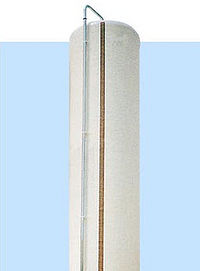Difference between revisions of "GRP Silos"
Jump to navigation
Jump to search
PurplePen19 (talk | contribs) |
|||
| Line 1: | Line 1: | ||
[[Category:Silos, Hoppers]]{{Knoppen}} | [[Category:Silos, Hoppers]]{{Knoppen}} | ||
[[File:GRP Silos.jpg|thumb|200px|right|GRP Silos]] | [[File:GRP Silos.jpg|thumb|200px|right|GRP Silos]] | ||
'''GRP Silos''' (glass fiber reinforced plastics) are particularly recommended for storing flours, sugars and grains. With a perfect hermetic seal and very high thermal insulation, they offer great mechanical resistance as well as high resistance to oxidation and corrosion. | '''GRP Silos''' (glass fiber reinforced plastics) are particularly recommended for storing flours, sugars and grains. With a perfect hermetic seal and very high thermal insulation, they offer great mechanical resistance as well as high resistance to oxidation and corrosion. | ||
Latest revision as of 05:49, 16 March 2014
GRP Silos (glass fiber reinforced plastics) are particularly recommended for storing flours, sugars and grains. With a perfect hermetic seal and very high thermal insulation, they offer great mechanical resistance as well as high resistance to oxidation and corrosion.
Silos are supplied complete with skirt, loading pipe, bleed pipe, oval-shaped manhole with flange, hinged door with lock, safety valve.
Common Advantages
- Single piece cone & body
- No seams, joints or bolted sections
- Corrosion resistant for long life
- UV stabilized GRP material to protect contents and silo
- Semi-transparent GRP allowing contents level to be checked
- Smooth interior for constant flow of feed
- 60º Cone angle as standard
- Superior thermal insulation values compared with steel resulting in lower risk of condensation
